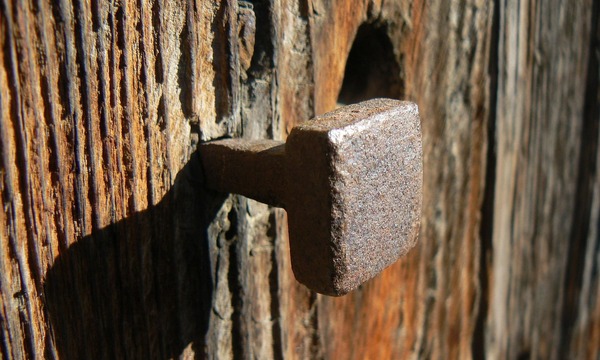The Dead Sea Scrolls exhibit at the California Science Center offers a historic opportunity to see artifacts and manuscripts from what is arguably the most significant archaeological discovery of the twentieth century. The Dead Sea Scrolls are precious to Jews and Christians of all backgrounds because of what they contribute to our understanding of textual criticism of the Hebrew Bible, the beliefs and practices of ancient Judaism and the cultural background of the New Testament.
The Dead Sea Scrolls consist of sectarian texts (like the War Scroll, Temple Scroll and the Manual of Discipline), parabiblical texts (like the Genesis Apocryphon and the Book of Enoch), apocryphal texts (like Sirach and Maccabees) and, of course, biblical texts (from all books of the Old Testament except Esther). The reason why these biblical texts are so significant for textual criticism is that they are about one thousand years earlier than the Masoretic Text on which we base all of our modern translations. And, aside from some minor variants in matters such as spelling, the biblical scrolls from the Dead Sea essentially corroborate the traditions that were preserved by the Masoretes (Jewish scribes working in the sixth-tenth centuries AD).[1] In other words, the Dead Sea Scrolls confirm the trustworthiness of the text of the Old Testament.
Three languages are represented in the Dead Sea ScrollsŌĆöHebrew (the language of the Bible and of the sectarian groupŌĆöpresumably the Essenes), Aramaic (the Jewish literature of the day) and Greek (the lingua franca of the Roman Empire). From the eleven extant caves in the region around Qumran (a small sectarian village on the northwestern shore of the Dead Sea), more than 900 documents have been recovered, some 500 of which reportedly came from Cave 4. The range of dates for these diverse texts is ca. 250 BC to 68 AD (when Qumran was evacuated due to the Roman conquest).
Dead Sea Scrolls: The Exhibition is running at the California Science Center until September 7, 2015. I am proud to say that 51┬▄└“ is one of the local sponsors of this exhibit provided by the Israel Antiquities Authority. (and see here for a discount available to the 51┬▄└“ community).
Personally, I have to tell you that my favorite part of the exhibit is actually the six hundred or so artifacts on display which chronicle the history of ancient Israel from its beginnings in the land of Canaan. Highlights include stone capitals from Israelite palaces, large storage vessels, early Hebrew inscriptions, sling stones, iron arrowheads, four-horned altars, incense stands, oil lamps, stamp seals and impressions, female pillar figurines, and many more items from excavated sites like Arad, Lachish, Jerusalem, Megiddo, Hazor and Dan. These Israelite artifacts are all in addition to the many artifacts from Second Temple period Judaism from sites like Jerusalem, Masada and, of course, Qumran. As for the Dead Sea Scrolls that are on display in this exhibit, there are fragments of sectarian texts, parabiblical texts and biblical texts (specifically, Exodus, Deuteronomy, Psalms and Job).
The exhibit is also complemented by a forty-five minute IMAX film, Jerusalem 3D, produced by National Geographic. The film, which is ticketed separately from the Dead Sea Scrolls exhibit, offers breathtaking footage of Jerusalem while demonstrating the cosmic significance of the city (cf., Ezekiel 5:5) and juxtaposing the perspectives and experiences of three young women from the cityŌĆÖs three primary religionsŌĆöJudaism, Christianity and Islam.
You might say to yourself, ŌĆ£I already saw the Dead Sea scrolls when they came on a previous tour,ŌĆØ and I have heard this response from many people. But I must tell you that you havenŌĆÖt seen these Dead Sea Scrolls and you likely have not seen these accompanying artifacts and you definitely havenŌĆÖt seen the Jerusalem 3D film. So make sure you plan your visit to the California Science Center before itŌĆÖs too late.
[1] Noteworthy exceptions are cases where the Dead Sea Scrolls corroborate Septuagint traditions (e.g., the books of Samuel and Jeremiah).
 51┬▄└“
51┬▄└“

.jpg)

